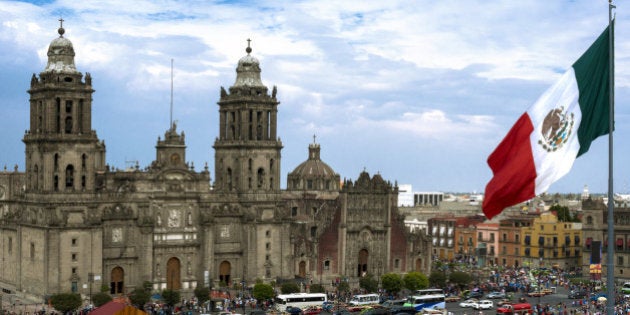
In contrast to the snow-bound North, the weather for my brief trip to Mexico last week was close to ideal. It was in stark contrast to the economic weather in emerging markets these days, which is more like what the US Northeast is currently coping with. Is Mexico's economy more in keeping with its sunny skies, or is the situation as gloomy as in other emerging markets?
Even if Mexico was doing well, recent data have many fearing a turn for the worse. Plunging oil prices have hit just as Mexico is implementing its greatest round of structural reforms -- notably in the energy sector -- threatening to undermine the process. And with one third of the federal public purse dependent on the oil sector, the halving of the Mexican oil basket-price suggests tough times for policy development and implementation and the risk outlook for the country as a whole. So, does Mexico have its own particular version of a dimming global outlook?
Maybe, at first blush. But scratch a bit beneath the surface and things don't look quite as bad. Burned by the volatility of oil markets in the past, the federal finance ministry has engaged in a hedging program that will, for the most part, ensure that oil price targets in its fiscal budget are met. Add to that significant government reserves and IMF funds that can be accessed if needed and things don't look nearly as bad -- at least for 2015. After that, the hedge runs out, and Mexico is at the mercy of the market. But this year allows for time to adjust plans and by year-end, oil prices may well be up from their lows, limiting the damage to the bottom line.
Even if the economy suffers at the hand of oil, there is a lot else going on. As the other economy that shares a border with the world's growth engine, Mexico has had a banner year in trade. Thus far, exports are up 7.9 per cent this year, thanks largely to the US economy, and given the latter's continued strength, Mexico's exporters seem buckled in for another great year. At the same time, lower oil prices have weakened the peso, which is down roughly 10 per cent against the US dollar recently and should give an additional boost to manufacturer-exporters.
Export growth should also benefit from Mexico's success at attracting significant manufacturing sector investments by foreign multinationals. The auto sector continues to pour funds in, not just from this continent but from Western Europe and Asia. While recent record-setting activity is not expected to persist, it is a testament to this country that in an investment-constrained world, it has been able to boast substantial inflows.
Those inflows are likely to get even better in the short term. With the US industrial machine facing ultra-tight capacity constraints this year, and an order book that continues to swell, Mexico stands to attract investment by US firms desperate to increase capacity speedily. As the growth cycle persists, other nations may also be at the doorstep. Labour constraints are expected to be a key feature of the current growth cycle, not just the familiar OECD cases, but also in key emerging markets like China. Sustaining productive capacity is likely to usher in a wave of cross-border investing in search of labour -- and Mexico has a deep endowment of both skilled and unskilled labour.
And don't forget the reforms. Sure, oil prices have added doubt to current progress, but some of the energy plays in Mexico remain long-term plums that oil and utility majors will find hard to resist. Investment funds are also likely to show interest, and their sights are almost always set on longer-term plays. Notice as well that it's emerging markets with reform programs like those in Mexico and Colombia that are currently over-performing.
Is the news all good? Not exactly. Recent high-profile crime and violence has sullied the Pena Nieto government's reputation, and in addition to other blow-back, may slow the reform process and the economy's ability to attract key investments. Also, a permanent drop in oil prices would necessitate a biting re-tooling of the country's finances, dampening the outlook.
The bottom line? Mexico is off to a good start in the nascent growth cycle, with a substantial boost coming from the resurgent US economy. If it remains stable, it will continue to be a good source of global -- and Canadian -- industrial capacity.
MORE ON HUFFPOST:
